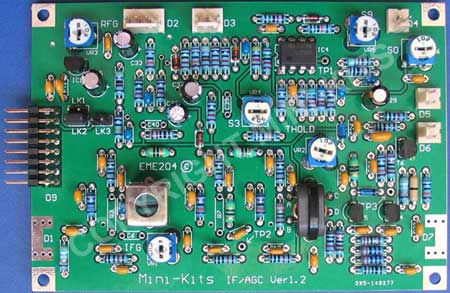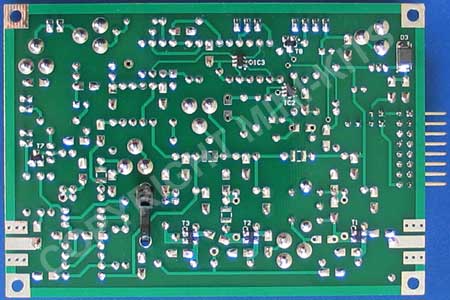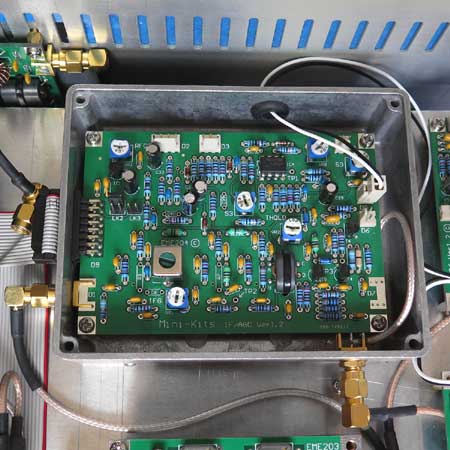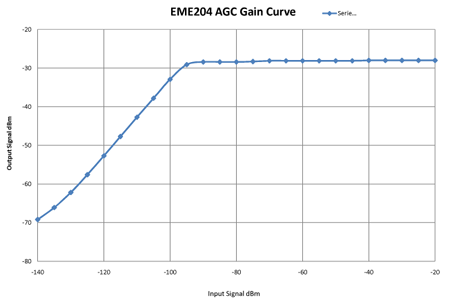EME204 9MHz AGC Amplifier Kit
- EME204 Module Description:
Updated! June 2022 - Kit Constructors Alert:
Updated! Mar 2018 - EME204-Rev2 Kit Construction Notes:
- Kit changes and Updates:
Updated! Mar18 - M1 Transceiver Block Diagram Rev1.5:
- M1 Series Transceiver Web page:
- Buy a EME204 Kit:
The Mini-Kits EME204 is a 9MHz high gain amplifier with automatic gain control, AM demodulator, and S-meter circuit. The AGC gain control circuit is based on older Transceiver designs from the mid to late 1980's that were all analogue in design, but we have used modern BF904 MosFETs that are specifically designed for AGC applications, to improve the AGC performance especially with strong signals. The result is an amplifier with a 52dB gain control range, that has a maximum 85dB gain with weak signals, and a 33dB controlled gain with strong signals. The AGC controlled IF output is typically -27dBm at 9MHz which is suitable for many product detectors. The figures above are typical for the M1 Transceiver, but the maximum and minimum gain and I/F output level can be changed with either readjustment of the trim-pots, or by minor changes to component values. The design will work as a 10MHz I/F but simply removing the 22pF capacitor across the IF transformer. We have not tested this design for use at 455kHz, but it should work with some changes including replacing the IF transformer.
The module is controlled through a single 16 Pin IDC header connector, making it easier to interface to logic circuitry. See the Block diagram for the connections to this module.
The EME204 is a part of the M1 series building blocks to construct a high performance M1 HF Transceiver. The M1 HF Series Kits have been designed to allow easy construction due to the use of mainly leaded components for those that don't like surface mount devices. Modern SMD components are only used when required due to availability of components, or for better performance. The RF modules are all designed with a 50ohm impedance making it easy to interconnect with the other M1 series modules, and your own homebrew circuit designs.
1/ A small mistake appears on Ver1.2 PC boards. The designator C8 has been used twice on the board overlay, but both C8 designators are not the same value capacitor. C8 next to R5 is a 0.1uF and C8 closest to C12 is a 100pF. The Ver1.2 and Rev2 circuit diagrams both show C8 twice.
2/ Kits made before 1/11/15 were supplied with a 1k trim-pot for VR1. The circuit diagram had 5k which is the correct value, but the 1k is fine to use.
3/
1/ An issue where the IF amplifier would oscillate if the IF Gain
trimpot VR1 was turned fully clockwise. With Kits after March 2016,
C8 has been changed from 0.1uF to 100pF that appers to has resolved
the problem.
2/ Kits after October 2015 have had VR1 changed from a 1K to 5K. The circuit diagram on earlier Kits did show a 5K which is the correct value, but a 1K was supplied in the parts bag. It is recommended that if you have oscillation after C8 has been changed to a 100pF then also change VR1 to a 5K.
3/




